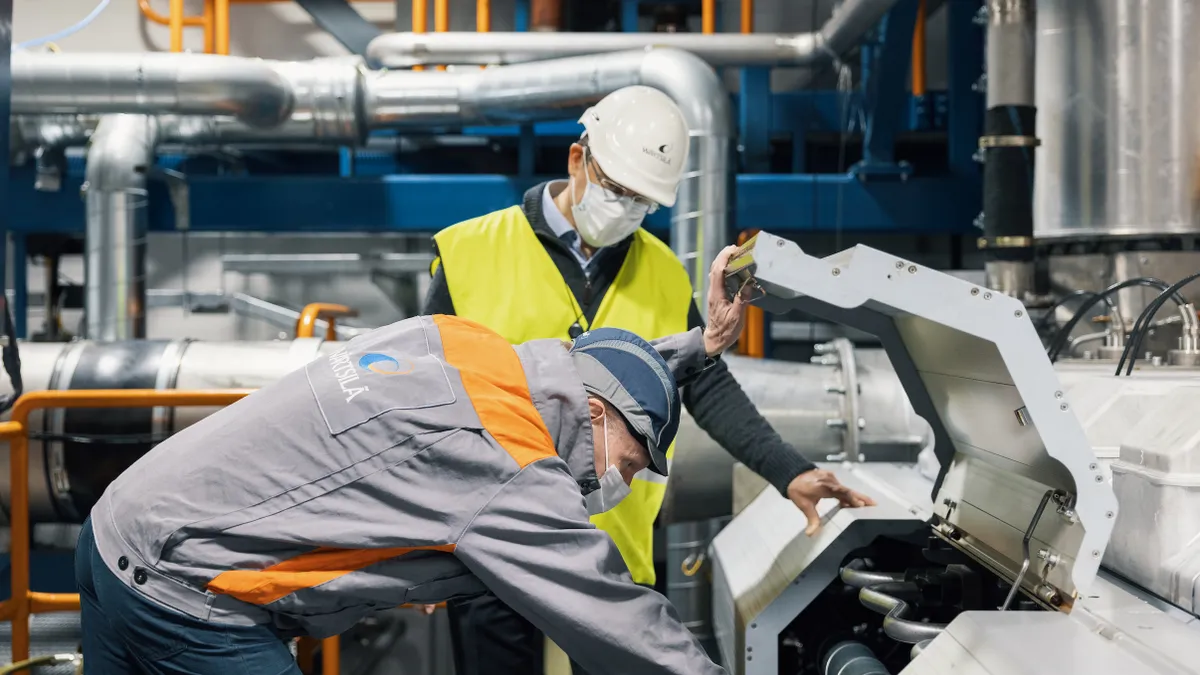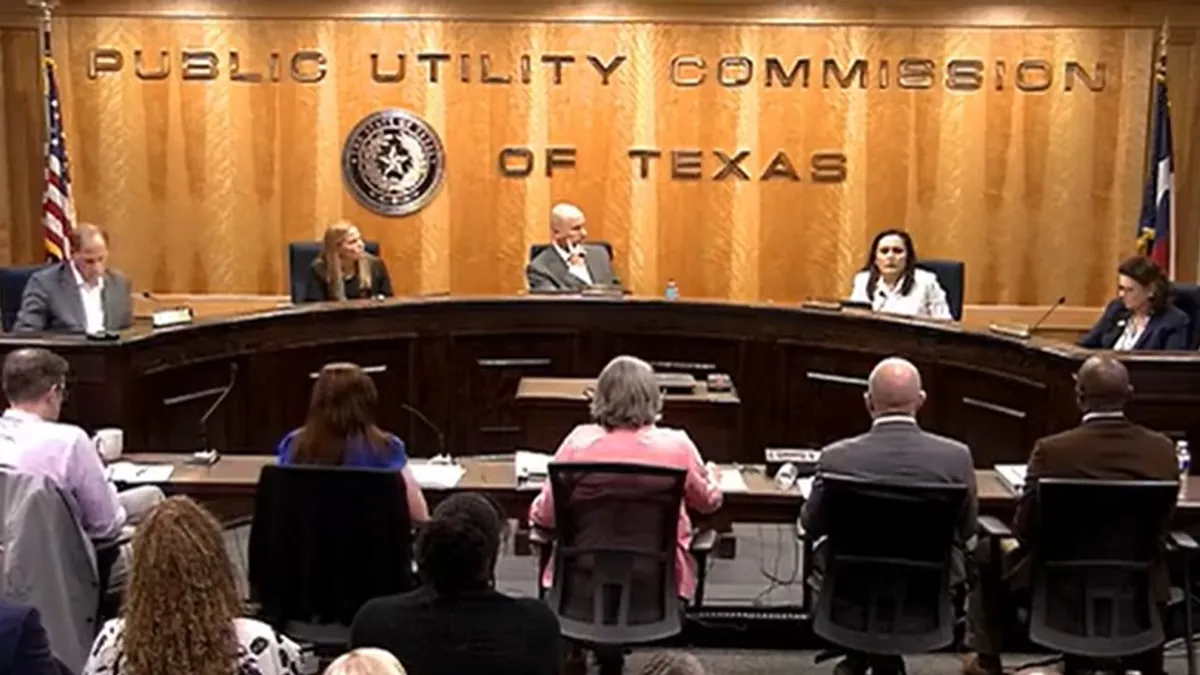Dive Brief:
- Technology company Wärtsilä announced an initiative Wednesday to develop an engine and power plant concept that will be able to run on 100% hydrogen by 2025, in a move that could contribute to widespread decarbonization of the electric power industry and other sectors.
- Experts see multiple ways in which green hydrogen, generated with renewables, could help utilities with aggressive clean energy goals, but there are no commercially available engines that can effectively use the fuel, according to Wärtsilä. The company’s new project aims to develop that concept by 2025, and commercialize it by the end of the decade, CEO Håkan Agnevall told Utility Dive in an interview.
- Clean energy groups agree that hydrogen could have a part to play in decarbonizing hard-to-electrify sectors like steel and aviation, and achieving a high-penetration renewables grid. But “there’s still a lot of uncertainty around how much hydrogen we will really need on the grid in 30 years,” said Rachel Fakhry, a policy analyst with the Natural Resources Defense Council’s (NRDC) climate and clean energy program.
Dive Insight:
Roughly one in three people in the U.S. live in a state or city that is trying to transition to 100% clean electricity, according to NRDC, with the Biden administration pushing for a national 100% standard by 2035.
A heavy penetration of renewable resources will be key to that shift, Agnevall noted, but because wind and solar energy are intermittent utilities will need to find balancing power to ensure a stable electric grid. Analysis conducted by Wärtsilä suggests that the G20 countries will need over 11,000 GW of wind and solar power to build 100% renewable energy systems, in turn requiring 933 GW of carbon-neutral thermal balancing capacity.
Hydrogen could help fill that role. It could also have huge implications for carbon emissions in big markets like steel and even aviation, said Patrick Molloy, senior associate, breakthrough technologies, with RMI. Those are sectors that have so far struggled to decarbonize in a significant way, but hydrogen offers them a way to do so.
“Part of the reason for the excitement you often hear is because some of our largest emitting sectors now have a pathway, and that pathway is very early in many ways but also in some ways is ready for this transition,” he said.
Wärtsilä’s engines can currently run on a 15% to 25% blend of hydrogen, Agnevall said. Its new project, which is based in Vaasa, Finland, is exploring ways to upgrade its balancing gas engines to run on pure hydrogen instead.
“Our base engine concept is very flexible — it can take very different types of fuels already today. But now, we’re evolving this flexibility up to 100% hydrogen,” Agnevall said.
Developing infrastructure that can run on pure hydrogen could have significant implications for the U.S. power sector. Some utilities are already exploring the potential of hydrogen — NextEra Energy, for instance, views it as a key piece of deep decarbonization efforts and has said it's rolling out small hydrogen projects. And Sempra Energy, parent company of the nation’s largest gas utility Southern California Gas, is aiming to be a leader in the space as well.
If Wärtsilä is successful, utilities can take engines that currently run on fossil fuels and convert them to “the next generation of fuel further down,” Agnevall said, so “we provide, you could say, an insurance that you will not be sitting there with stranded assets.”
However, creating engines that can run on pure hydrogen is just one part of a larger infrastructural effort that will be needed to deploy the fuel at scale. Other parties will need to work on fuel availability, as well as building out a distribution network, Agnevall said.
“When you develop a new technology, you need to face [the fact] that you are part of an ecosystem, so you cannot do it alone,” he added.
The global market for hydrogen is currently around 110 to 120 million metric tons, largely concentrated in oil refining and ammonia production, so there is some pre-existing knowledge of how to move the fuel around, Molloy said. Direct pipelines are one option, but smaller volumes of hydrogen can also be transported in canisters, sometimes liquefied. Another option is using hydrogen to produce zero-carbon ammonia, then transporting that ammonia in liquid form. All these solutions have different challenges, but also offer different flexibilities, he said.
“That is very much a live conversation about when we get to increased volume and more diverse use cases, about which system is best for that kind of support,” Molloy added.
NRDC’s Fakhry sees certain challenges for the hydrogen sector on both the supply side and distribution side. With the former, the key issue is getting it to a cost point that is absorbable by customers, and the main way to address that is to actually deploy it more and achieve economies of scale, she said. On the distribution side, there are a whole suite of other questions — the industry is still figuring out how much of the gas can be blended into current systems. And then, there’s the broader question of whether utilities should be building long-lived, expensive new pipelines when there are still uncertainties around the ultimate scope of hydrogen, Fakhry said.
“Distribution is really a difficult question… because we know we need to start investing in hydrogen in this decade to get cost reductions and experience, so how do we do that in the most no-regrets manner, such that we are not investing in premature assets?” she added.











